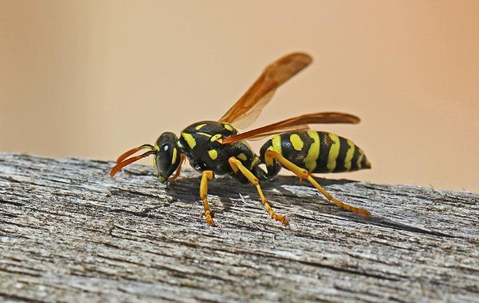While creepy crawly bugs like spiders and centipedes are often considered the scariest pests to encounter, wasps can strike fear into the hearts of homeowners as well. One sting is all you need to appreciate the pain and discomfort that these flying insects can inflict. While these pests can be intimidating, they can be deterred and even prevented with the proper methods. Here’s your guide for wasp control in Long Island.
About Wasps In Long Island
Several types of wasps call Long Island home. While many species of wasps are solitary, some are also social insects that live in nests with dozens or even thousands of members.
European hornets – First introduced to New York in the 1800s, these stinging insects have become widespread in the region. They are larger than most indigenous wasps, measuring upwards of ¾ inch in length. They are brown with yellow stripes and are known to be active at night.
Yellowjackets – The infamous yellowjacket is bright yellow with bands of black across its body. These insects are known for their aggression and can sting repeatedly. One yellowjacket nest can contain thousands of individuals.
Paper wasps – Named for the paper mâché-like nests they build, there are more than 200 species of paper wasps in the United States. They come in various colors and sizes but can be recognized by the upside-down umbrella shape and papery structure of their hives.
What Attracts Wasps?
Like most pests, wasps are motivated by food and will establish their nests in areas with a reliable source of prey to feed on. Wasps attack and dismember other insects to feed their young. Any source of meat will do, which is why wasps are also known to steal a hunk of hamburger or hotdog at your neighborhood cookout.
Wasps will also go after sweets, especially as summer ends and fall begins. Juice, soda, and beer are all prime targets. Sweet-smelling plants are also attractive to wasps. In fact, wasps are actually beneficial to the environment because they help pollinate plants (though not as effective as bees). Wasps are attracted to plants like sweet fennel and Queen Anne’s lace, as well as most flowering and fruit-bearing trees.
Thankfully, you can control many of the factors that may attract wasps to your Long Island home.
How To Prevent Wasps In Long Island
- Be mindful of trash. Make sure that the trash bins you keep outdoors are sealed shut at all times. If you have any outdoor gatherings, be sure to clean up thoroughly and don’t leave food or sugary drinks unattended.
- Do some yard work. Reduce the population of prey insects that wasps feed on by keeping your grass trimmed as well as any hedges or shrubs. Don’t let overgrown vegetation develop.
- Do some repairs. Prevent wasps from building a nest on your property by repairing damaged wooden siding or panels. If you notice holes in your yard, fill them up with gravel. Replace or repair screen doors and windows to prevent wants from getting indoors.
- Use plants. While wasps are attracted to certain sweet-smelling plants, they are repelled by others. Planting lemongrass, basil, or thyme around your property can help keep wasps at bay.
The best thing you can do to control the wasps on your Long Island property is to get in touch with the experts at Parkway Pest Services. For over 80 years, we’ve been providing our customers with the best pest control possible. With our residential pest control plans, you’ll be protected from wasps and a variety of other common pests that can disrupt your life. When you choose us, you can trust that your wasp problem is done for. Contact us today.

